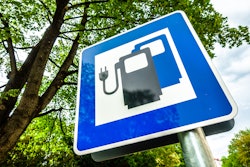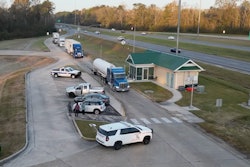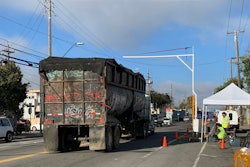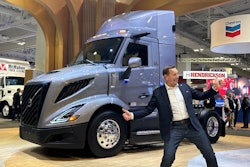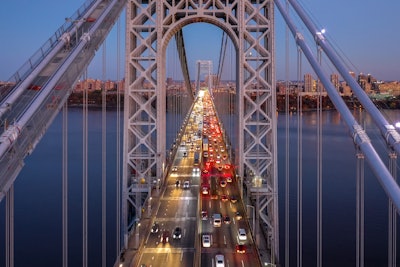
For the seventh year in a row, the intersection of I-95 and SR 4 near the George Washington Bridge in Fort Lee, New Jersey, is the top freight bottleneck in the country, according to American Transportation Research Institute analysis.
Based on an extensive database of freight truck GPS data, ATRI's 2025 Top Truck Bottleneck List measures the level of truck-involved congestion at more than 325 locations on the national highway system, and uses several customized software applications and analysis methods, along with terabytes of data from trucking operations, to produce a congestion impact ranking for each location.
Data from 2024 scrutinized by ATRI found traffic conditions continue to deteriorate from recent years, in some instances due to work zones resulting from increased infrastructure investment. Average rush hour truck speeds were 34.2 MPH, down 3% from the previous year. Among the top 10 locations, average rush hour truck speeds were 29.7 MPH.
“Delays inflicted on truckers by congestion are the equivalent of 436,000 drivers sitting idle for an entire year,” said ATRI President and COO Rebecca Brewster.
In addition to lost time and money, traffic delays waste fuel. Trucks burn an estimated 6.4 billion gallons of diesel fuel, producing more than 65 million metric tons of additional carbon emissions, while stuck in traffic snarls.
While infrastructure improvement is indeed a contributor to the problem, Brewster noted they are a necessary evil for freight lanes to improve in the long run.
"Illinois was once home to the top bottleneck in the country, but following a sustained effort to expand capacity, the Jane Byrne Interchange in Chicago no longer ranks in the top 10," she said. "This data gives policymakers a road map to reduce chokepoints, lower emissions, and drive economic growth.”
Once the number one truck bottleneck in the country for three years in a row, the recently constructed Jane Byrne Interchange saw rush hour truck speeds improve by nearly 25% following an $800 million reconstruction project. Prior to construction, daytime vehicle speeds ranged from 12 MPH to 37 MPH, depending on the particular segment of roadway. During that same time, ATRI’s truck bottleneck data shows that the average speed of trucks during daytime hours was approximately 22 MPH.
Chicago's I-290 at I-90/I-94 now sits at No. 15 on the list, having fallen two spots from the year before.
“As the Trump Administration and new Congress kick off the process of reauthorizing the federal highway bill, this report provides a precise blueprint on where to begin,” added American Trucking Associations President and CEO Chris Spear. “These traffic bottlenecks not only choke our supply chains, adding $109 billion annually to the cost of transporting the everyday goods that Americans depend on, but they also impact the quality of life for all motorists who rely on the national highway system to commute to work, school, church, and other life events. Targeted investments to reduce this traffic congestion are exactly the kinds of projects, with a measurable return on investment, that taxpayers come to expect of their elected officials.”
The remaining Top 10 bottlenecks
2. Chicago: I-294 at I-290/I-88
3. Houston: I-45 at I-69/US 59
4. Atlanta: I-285 at I-85 (North)
5. Nashville: I-24/I-40 at I-440 (East)
6. Atlanta: I-75 at I-285 (North)
7. Los Angeles: SR 60 at SR 57
8. Cincinnati: I-71 at I-75
9. Houston: I-10 at I-45
10. Atlanta: I-20 at I-285 (West)




